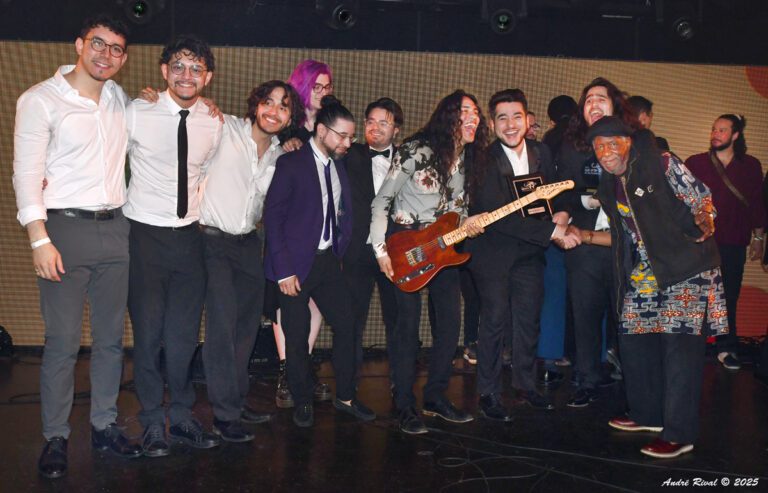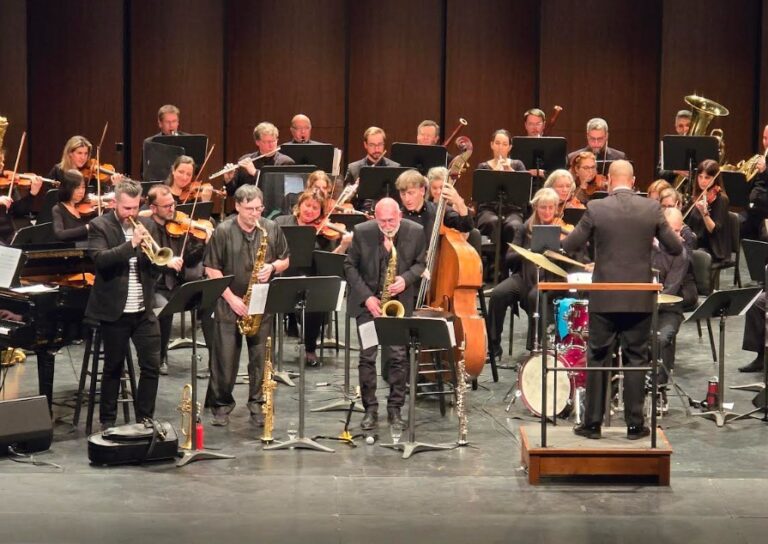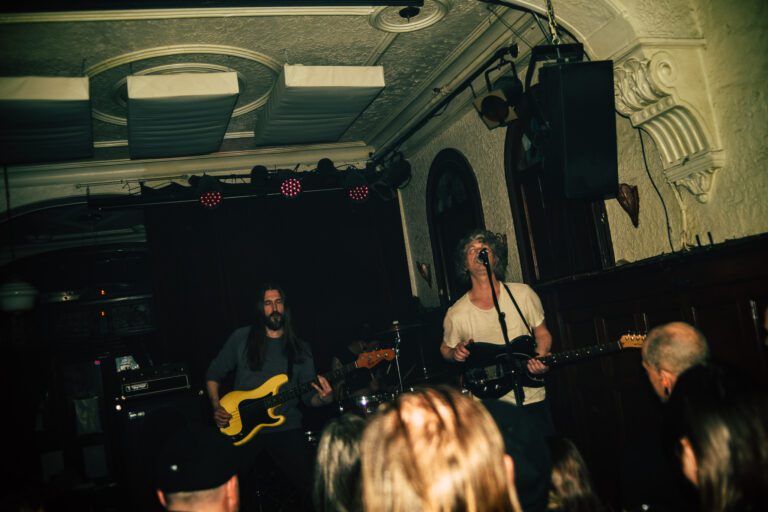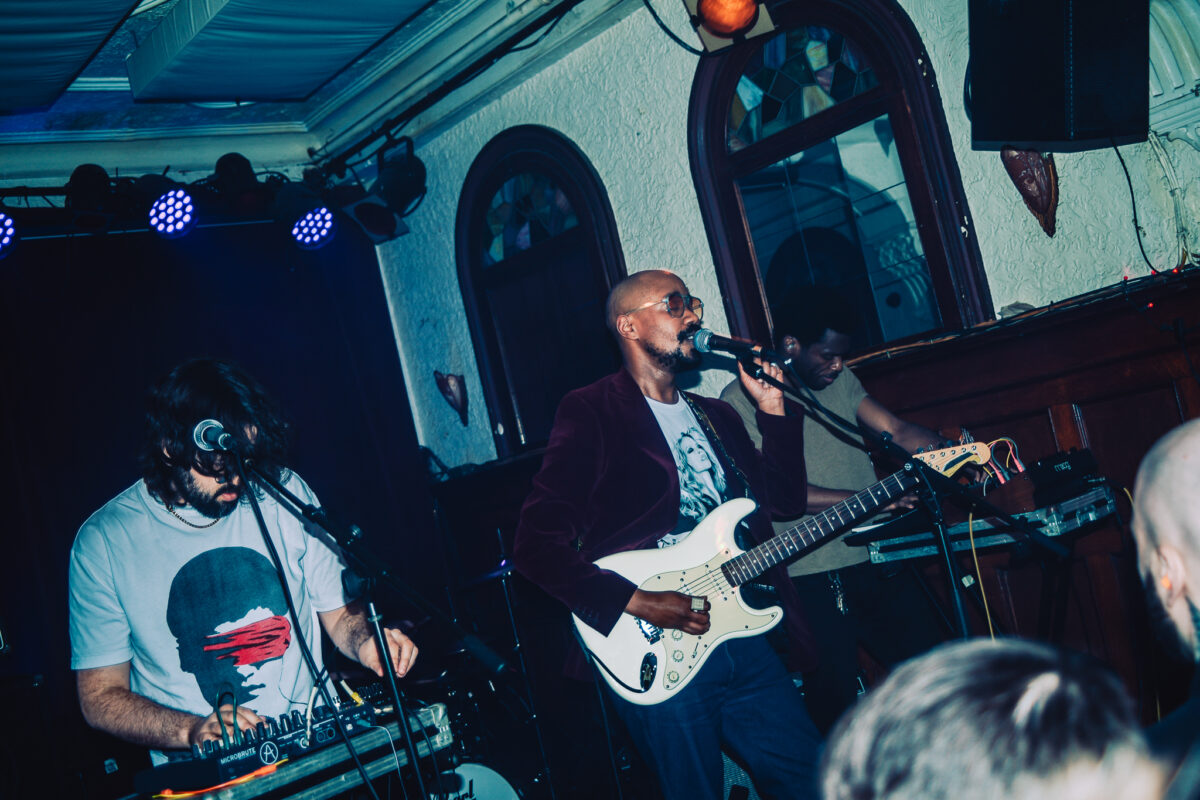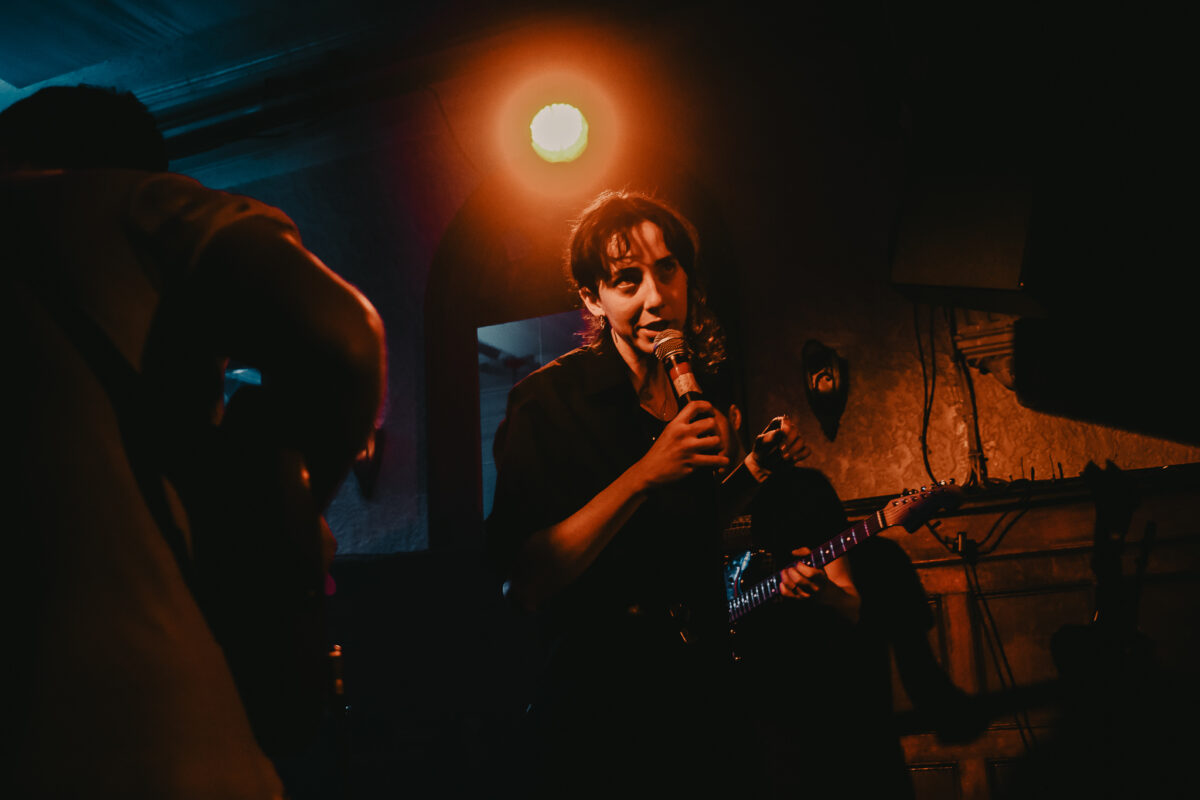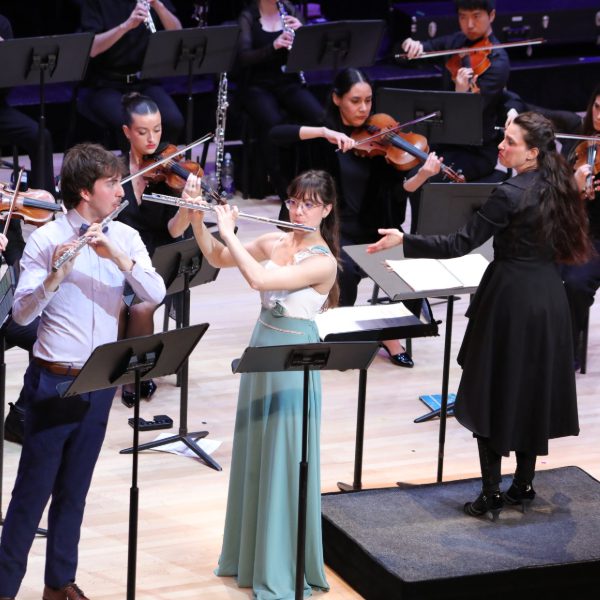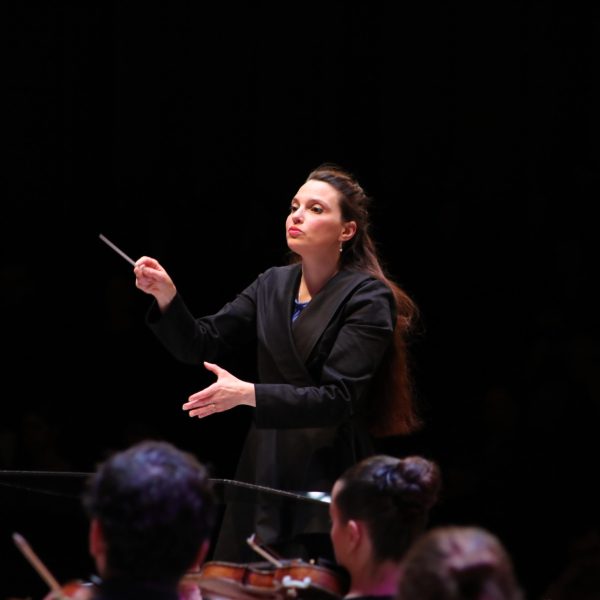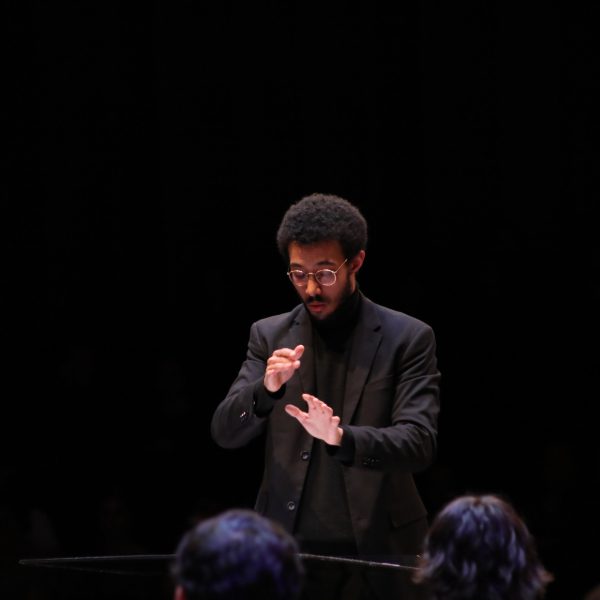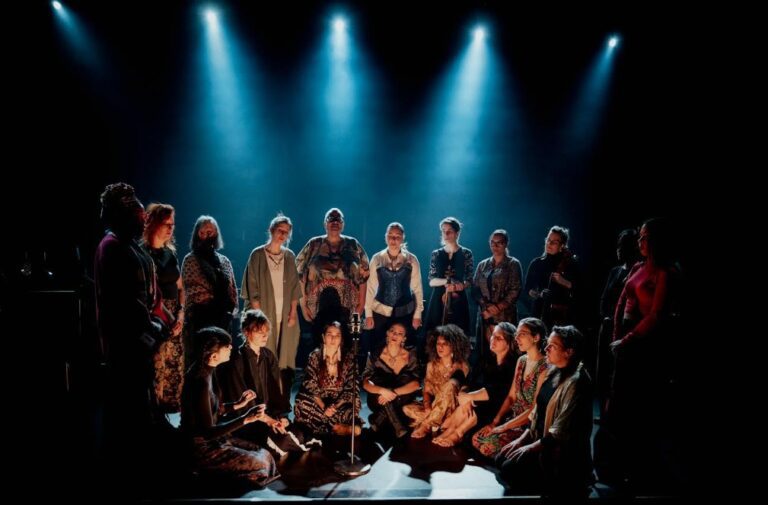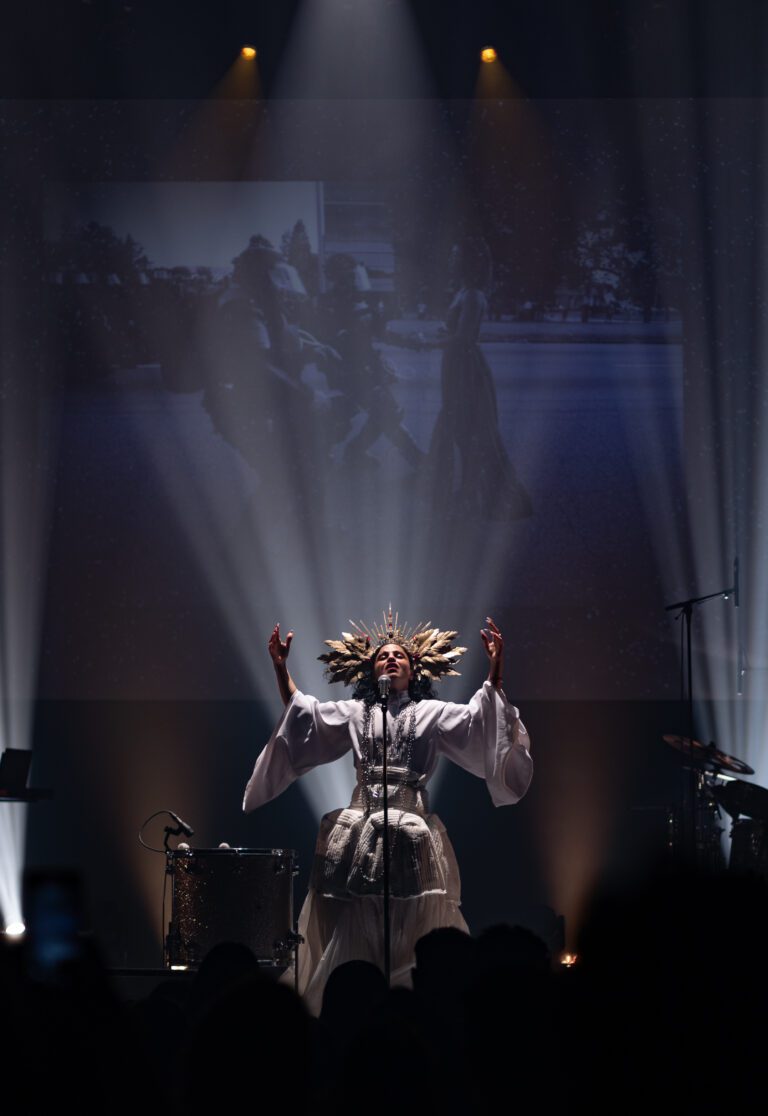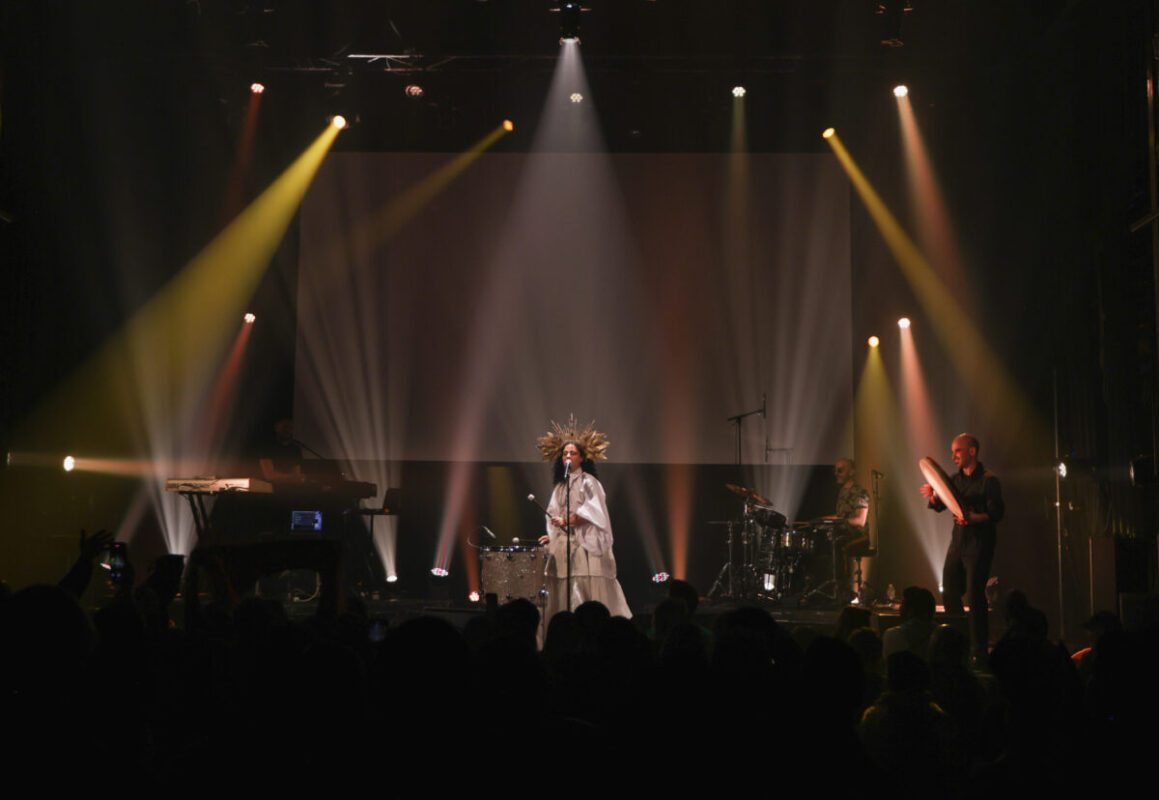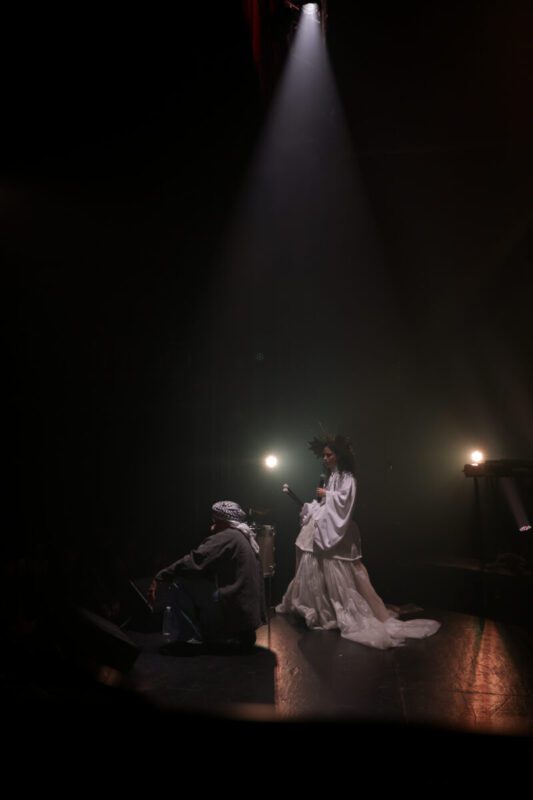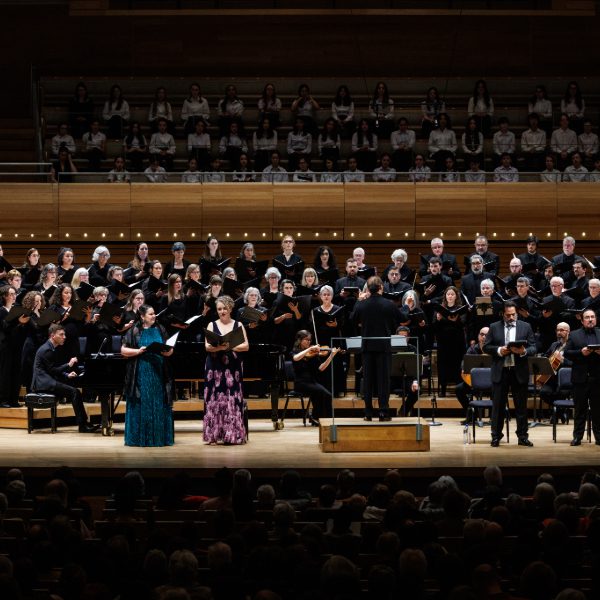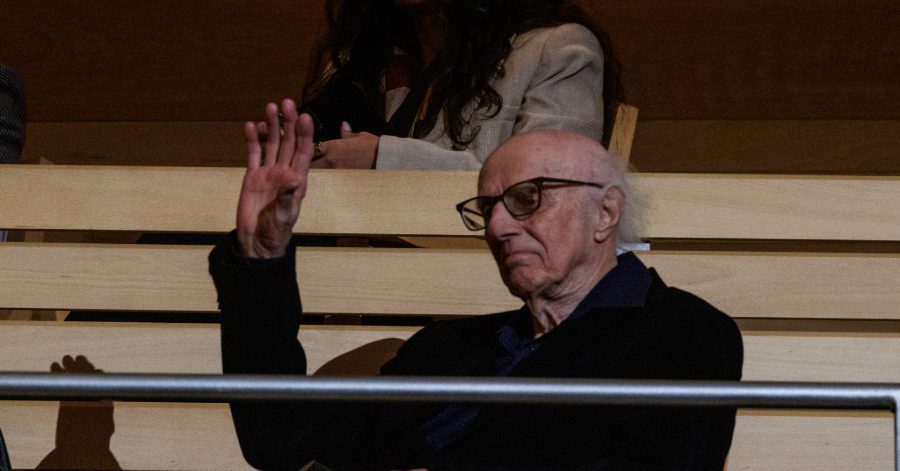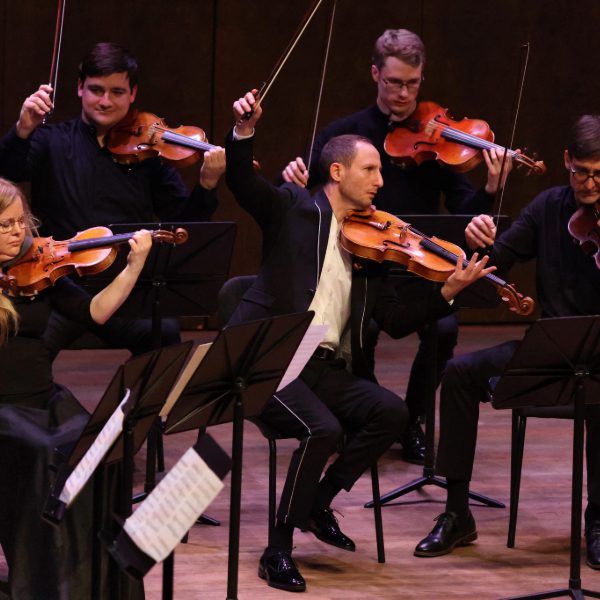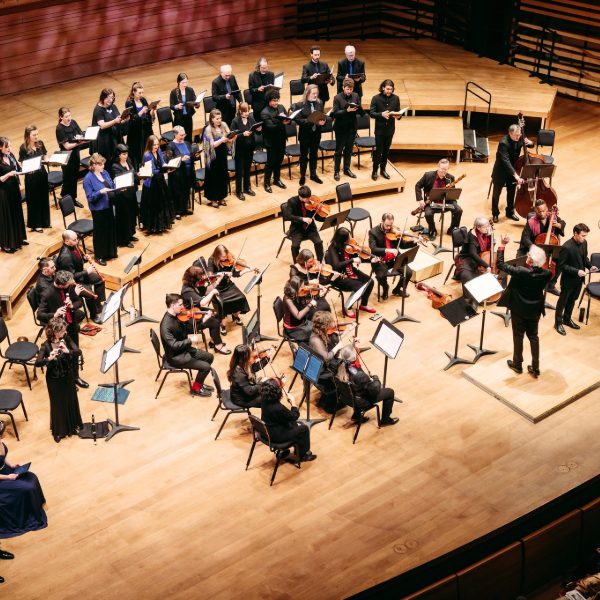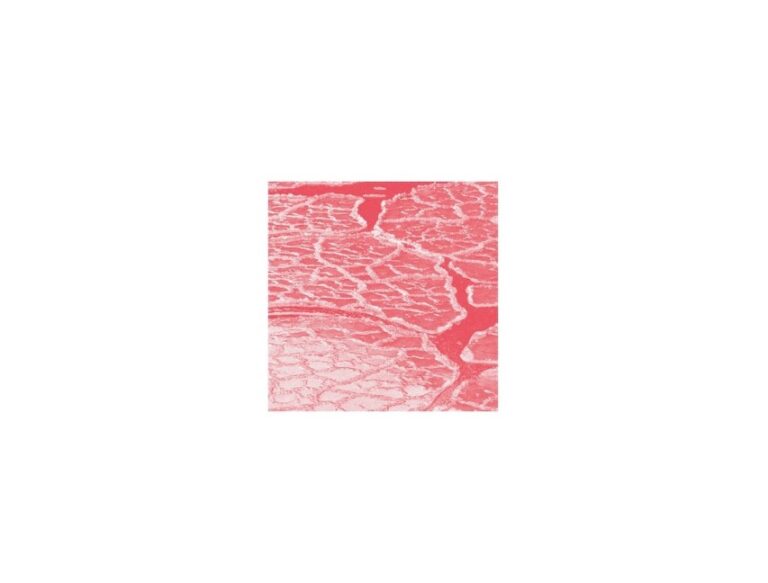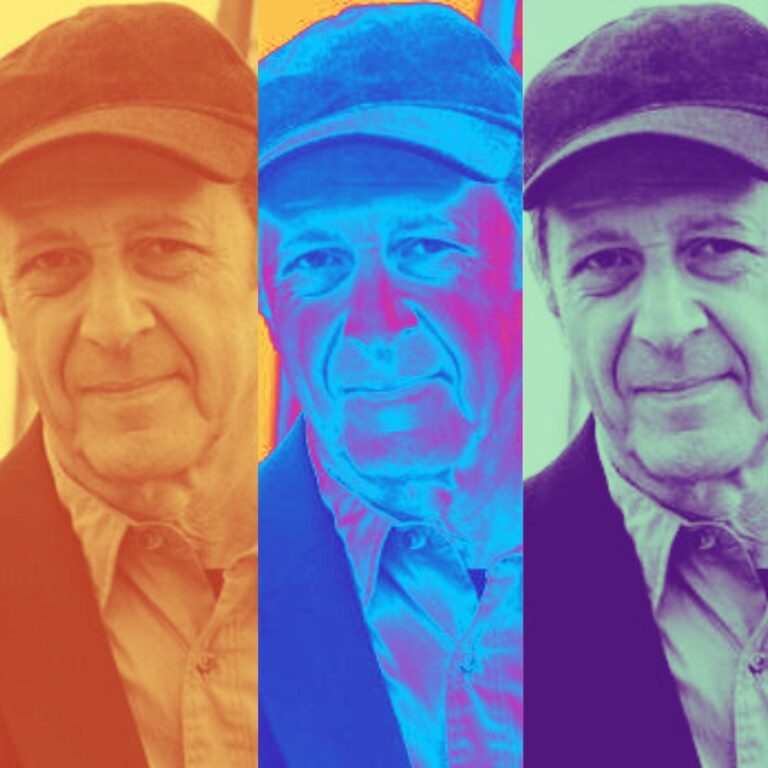À travers leur vies professionnelles qu’on devine intenses, les saxophonistes Yannick Rieu et Lionel Belmondo ont mis deux ans à mettre ce programme au point : un jazz symphonique construit, aménagé et reformulé autour des compositeurs Johannes Brahms, Maurice Ravel et Lili Boulanger, soit la fin du 19e siècle et le début du 20e au service du jazz moderne. Malgré la tenue du débat des chefs et le match décisif du CH pour accéder aux éliminatoires de la LNH, une salle André-Mathieu bien garnie a chaudement accueilli l’exécution de ce programme.
La première intervention au programme est baignée de ces harmonies romantiques exécutées sur un mouvement lent et des notes graves. Les trois souffleurs de jazz se fondent dans l’Orchestre symphonique de Laval sous la direction de Daniel Bartholomew-Poyser. Jazzmen et interprètes classiques se fondent dans la partition, aucune improvisation n’est ici prévue.
La section rythmique sextette s’amène pour une relecture orchestrale du Nocturne de Lili Boulanger, sœur cadette de la grande pédagogue parisienne Nadia Boulanger, soeurette dont les musiques sont de plus en plus jouées, un siècle après sa disparition tragique et prématurée: Louis-Vincent Hamel, batterie, Rémi-Jean LeBlanc, contrebasse, Jonathan Cahier, piano. Le menuet en do mineur de Ravel est parfaitement propice à la jazzification. On observe déjà les croisements entre le Français Maurice Ravel et l’Américain George Gershwin, dont se sont nourris les plus grands penseurs du jazz moderne,de Bill Evans à Duke Ellington.
Cette fois, le sextette s’impose au sein de l’OSL et impose cet équilibre entre jazz moderne et musique classique moderne. Les French, très solide trompettiste australien transplanté à Montréal, prend le premier solo, suivi du pianiste Jonathan Cayer, devenu l’un des très bons jazzmen de la période actuelle sur le territoire québécois. Les deux saxophones et la trompette sont entrelardés dans certains thèmes, familiers et agréables à l’écoute.
Composé pour le piano seul, ce Menuet en ut dièse mineur de Maurice Ravel a été orchestré et arrangé par Lionel Belmondo pour orchestre symphonique et sextette de jazz. Le thème principal met en relief le saxophone soprano de Belmondo complété par les bois de l’orchestre, suivi du saxo ténor de Rieu.
Inspirée du premier mouvement de la Symphonie No 4 de Brahms, cette pièce de Yannick Rieu implique l’improvisation des vents dont les lignes mélodiques ajoutent un contrepoint supplémentaire à la progression harmonique prévue pour l’orchestre. Il est alors intéressant de noter l’unification heureuse des deux esthétiques, cette fois dominée par le romantisme brahmsien.
S’ensuit Nostalgie, une pièce de Yannick Rieu dont il est le soliste principal aux côtés de Rémi-Jean LeBlanc, mais la partie jazz de l’œuvre demeure très jazz, l’orchestre se transforme alors en faste accompagnateur et rappelle les arrangements et orchestrations typiques des grands orchestres américains au milieu du 20e siècle.
Un riff de contrebasse introduit l’orchestre, le piano et les autres solistes du sextette. Le piano mature et assuré de Jonathan Cayer et le sax soprano de Rieu sont ici mis de l’avant. Les somptueuses harmonies sont tellement propices au jazz moderne qu’on en oublie les fondements originels. Il faut toujours rappeler que les jazzophiles ont intégré les musiques romantiques ou classiques modernes sans nécessairement en connaître précisément le répertoire, en voilà une autre éloquente démonstration intitulée Ritournelle.
La suivante,Ballade sur le nom de Maurice Ravel , a été composée par Yannick et arrangée par Lionel, cette œuvre relativement courte est introduite par les cordes ravéliennes de l’OSL qui précèdent le thème exposé par le sextette. La nappe est dressée pour un riche exercice harmonique à l’échelle symphonique, l’excellent trompettiste Lex French y est mis en valeur pour une improvisation fervente qui en coiffe la conclusion.
Un solo de batterie bien senti de Louis-Vincent Hamel, et puis c’est parti dans un swing soigneusement enrobé par l’orchestre symphonique. Pour Pharaon de Yannick Rieu, des accords de piano précèdent le thème exposé à troix voix, on se trouve dans un romantisme luxuriant, et le piano s’élance sur un groove lent et ternaire avant de donner la réplique à l’orchestre symphonique et ses collègues du sextette pour conclure aux côtés des saxes, cuivres et compléments orchestraux.
Inspirée des Jeux d’eau de Maurice Ravel, La Couleur de l’eau est l’occasion pour Lionel Belmondo de fusionner le discours ravélien avec un jazz moderne typique des années 50, époque hard bop et Third Stream, s’envole alors Lex French dans un chemin dont il connaît parfaitement les balises.
On conclura ce programme ambitieux avec Embrahms-moi de Yannick Rieu, une pièce qui ne fut pas sans difficultés côté arrangement, dixit Lionel Belmondo. Le piano s’exécute d’abord et puis le romantisme brahmsien, donc pré-moderne et tellement repris dans les trames cinématographiques hollywoodiennes, se fond dans le discours de Yannick Rieu dont le thème au saxophone est purement romantique.Solidement ficelé tout ça, au plus grand plaisir des mélomanes.
